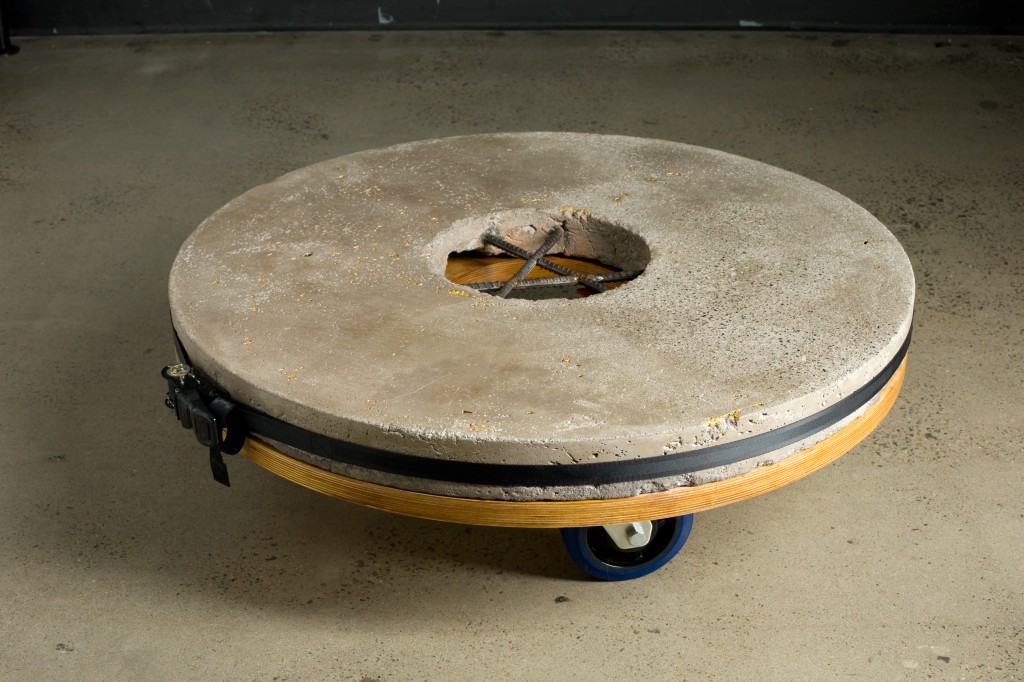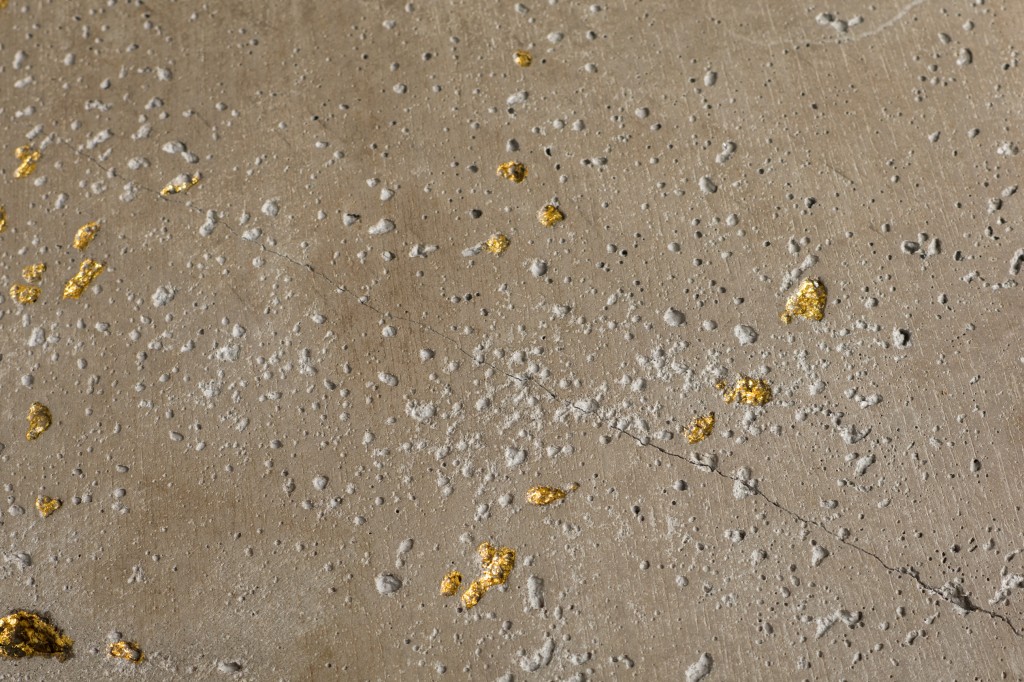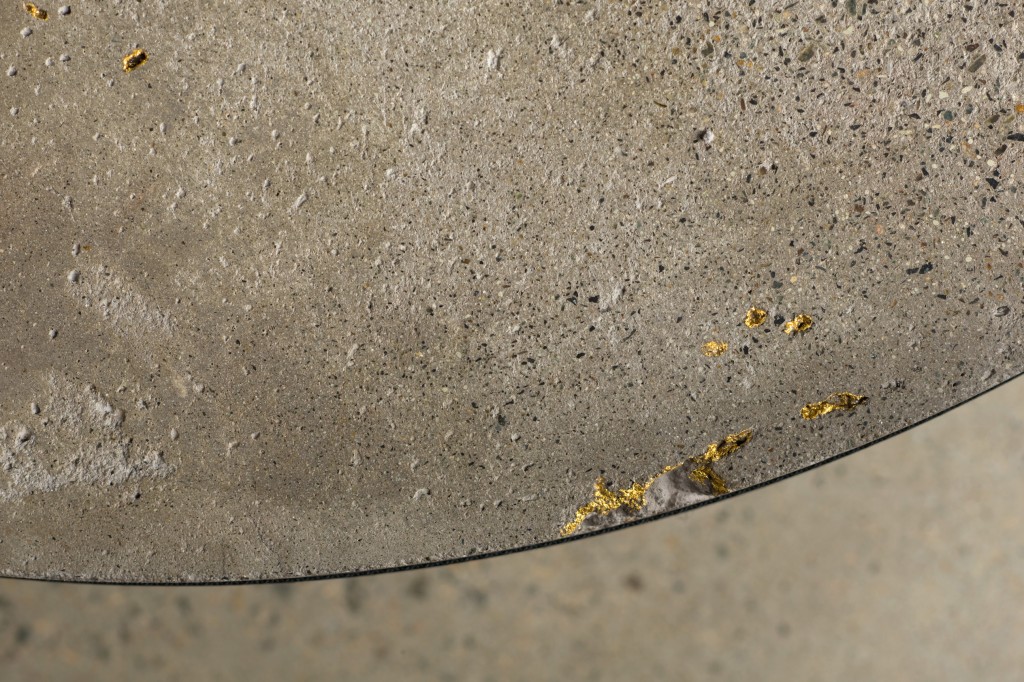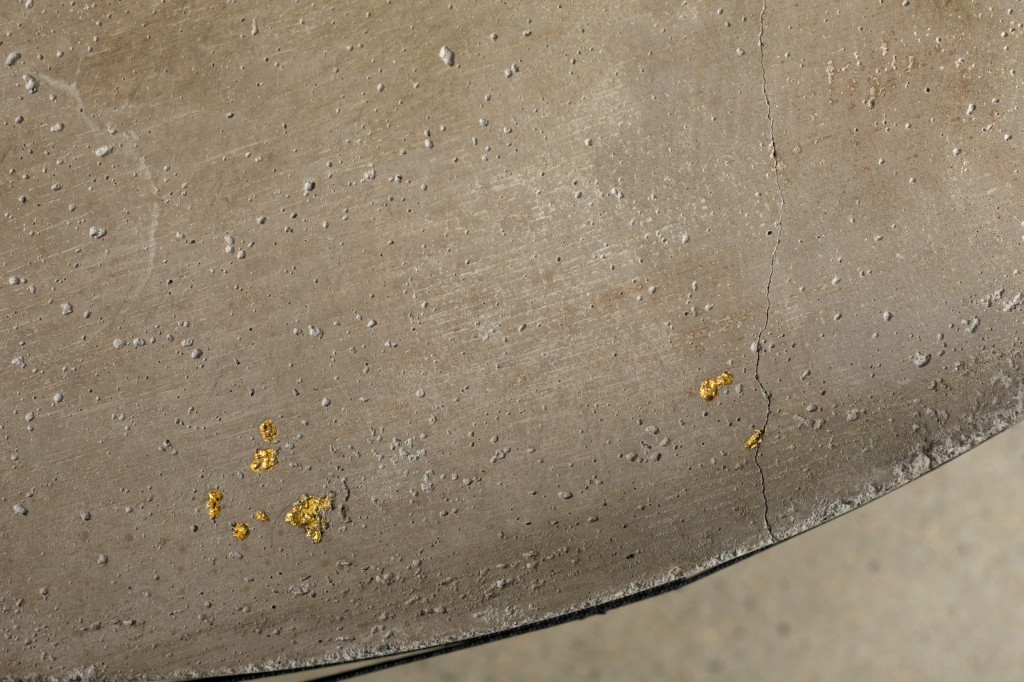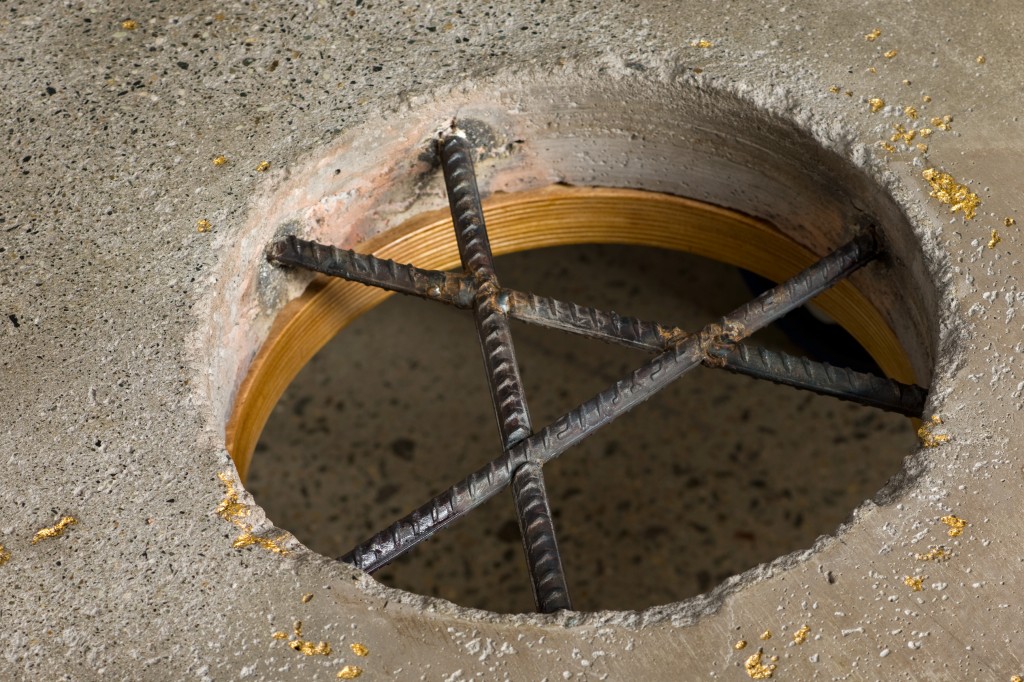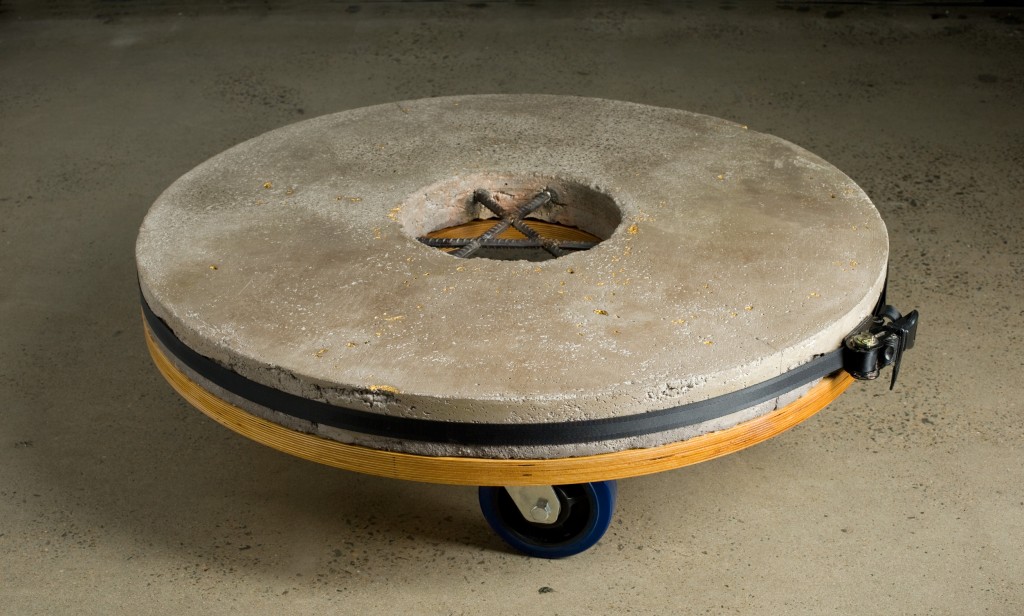Gilded Concrete Low Table
Note: I later wrote about this object and the subject of concrete for the conference Unmaking Waste in May 2015, published in their proceedings. This paper was later converted into an article for a general audience for the Conversation.
Historian Robert Courland writes that concrete is so ubiquitous to be almost invisible. City dwellers spend much of their lives surrounded by concrete, walking on concrete, driving on concrete, and living inside concrete, within buildings constructed from boxed concrete slabs. The latter may not always be obvious—concrete is often clad in paint, covered by carpet and floorboards or thin panels of brick or stonework. It can be refreshing when concrete is presented without such cladding, presented in raw slabs that are unfinished or at the most polished. This was a trend for the Brutalist style of architecture from the 1970s and its still popular, though often for economic reasons rather than aesthetic. For example, the floor of the photostudio where these pictures were taken is an uncovered, ground back concrete slab that reveals the irregular material consistency of concrete; visible in the way the filling aggregate of stones and sand coalesces and scatters in patterns across its surface.
But even an ‘honest’ use of concrete in this way hides the internal reinforcement, a mild steel structure known as rebar, which is the cause of obsolescences and questionable durabilities. Centuries ago the ancient Roman’s mastered un-reinforced concrete, and used it to build roads and structures which still exist 2000 years later. The Pantheon in Rome is still the world’s largest unreinforced concrete structure, and is in excellent condition. However, in the early 20th century, not longer after the potential of concrete as a building material was rediscovered (its technologies were mostly lost after the fall of the Roman Empire), the use of rebar became popular due to its ability to strengthen concrete and produce large structures cheaply. A developer’s dream, but rebar has an ugly problem—it rusts. This results in the expansion of the metal, which cracks and deforms concrete in a type of damage known as concrete cancer. Many of the early reinforced concrete structures of the 20th century are now suffering from this, and soon many more structures will do too. Courland contends that most concrete structures built in the last few decades will only last 75 to 125 years. A bit more for high value infrastructure like dams, but less for common buildings and roads. The truth may be that the most iconic structures of the 20th century will crumble apart in the 21st. Considering the tremendous energy and carbon pollution cost concrete production incurs, greater than any other human endeavour after coal plants and motorised transport, this seems an incredible waste of resource. And waste of a legacy.
Working from the same theoretical concepts as those detailed in my PhD thesis, regarding the flow of affects through material, my new work Gilded Concrete Low Table seeks to capture and express the material capacities of reinforced concrete. Mainly this concerns the inherent textural inconsistency of concrete, its voids, irregularities and tendencies to crack. While concrete is often presented as solid blocks of homogenous material, the internal mix of cement, sand, stone and other aggregate is never perfectly blended. It is a heterogenous material, both within a single pour, and across the thousands of unique blends poured into slabs everyday throughout the world.
In this work the inconsistency of concrete is captured in the play of textures across the surface. Different kinds of cement and aggregate blends are visible. The rough pour results in voids, which are highlighted with gold leaf gilding. Elsewhere, hairline cracks extend across the surface, a result of steel reinforcement. Such cracks are an early indicator of concrete cancer in building applications. In this table the cracks are held together with a ratchet clamp strap. Over the course of decades, as the rusting steel may force the cracks further apart, the clamp can be periodically re-tightened to maintain the structure and function of the table.This is not just a way to portray the obsolescences of reinforced concrete to the user, but a way to engage in the user in a process of maintenance that is an affective experience of material.
In these photos the table is situated on a concrete floor with similar textural inconsistencies to accentuate its relations to the architectural uses of concrete and its materialities, durabilities and obsolescences. My purpose with this work is to express these relations and to accommodate the idea that the concrete around us will decay faster than we might consider.
Regardless of whether the use of reinforced concrete reduces or becomes technologically improved to avoid such obsolescence, society will need to manage this decay with foresight, creativity and resolve, a perception I attempted to capture with the use of gold leaf gilding.
The table is mounted on a plywood frame and oversize industrial trolley casters, which can be turned under the table and locked.
Concrete, rebar, plywood, caster wheels and ratchet strap clamp.
330mm high x 900mm diameter.
Exhibited at the Craft ACT show Embracing Innovation 2016, 21 July – 27 August 2016.
